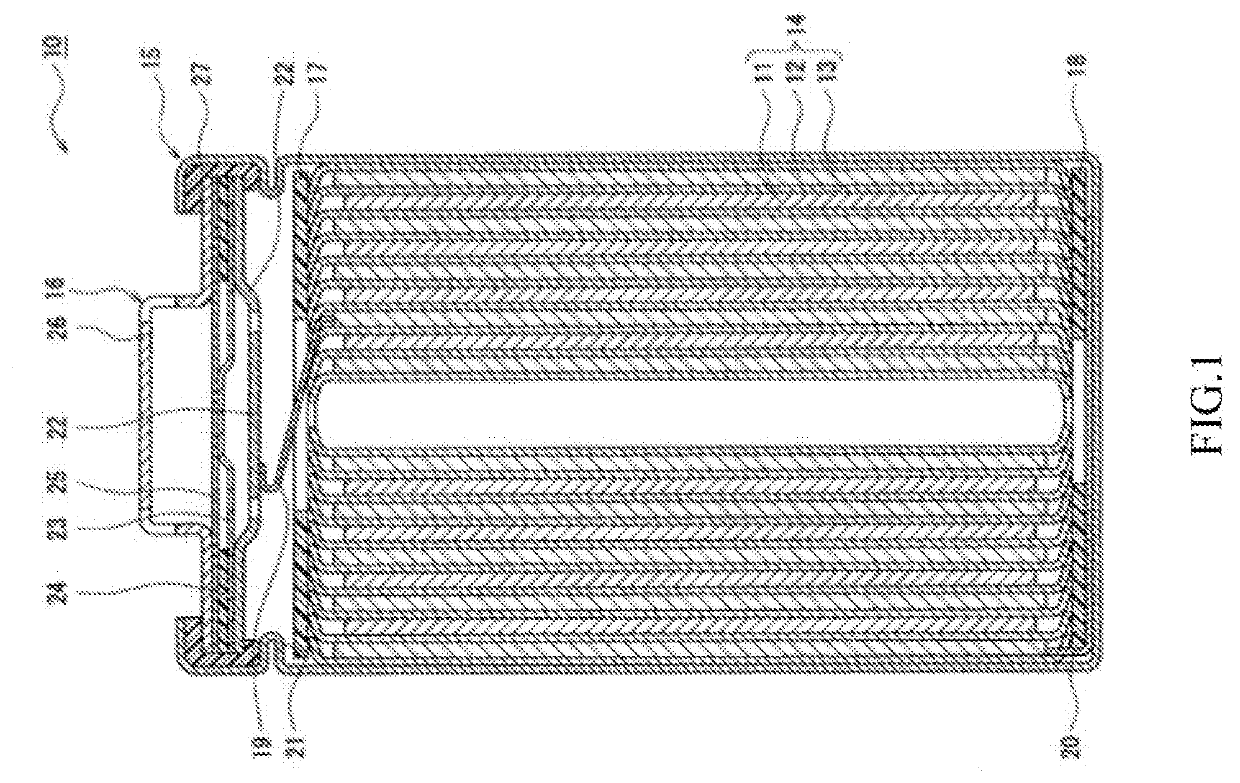Positive electrode active material for nonaqueous electrolyte secondary batteries, method for producing positive electrode active material for nonaqueous electrolyte secondary batteries, and nonaqueous electrolyte secondary battery
a technology of nonaqueous electrolyte and active materials, which is applied in the direction of cell components, electrochemical generators, and nickel compounds, etc., can solve the problem of increasing the amount of gas generated during charg
- Summary
- Abstract
- Description
- Claims
- Application Information
AI Technical Summary
Benefits of technology
Problems solved by technology
Method used
Image
Examples
example 1
[Production of Positive Electrode Active Material]
[0054]Nickel cobalt aluminum oxide represented by LiNi0.91Co0.06Al0.03O2 and lithium hydroxide (LiOH) were mixed at a molar ratio of 1:1.03, and the mixture was calcined at 745° C. for 20 hours in an oxygen flow. Tungsten oxide (W03) was added to and mixed with the unwashed calcined product at a ratio of 161 μmol per 1 g of the calcined product, and the mixture was then heat-treated at 400° C. for 3 hours in an oxygen flow to provide a positive electrode active material.
[Production of Positive Electrode]
[0055]The above positive electrode active material, acetylene black, and poly(vinylidene fluoride) were mixed at a mass ratio of 100:1.25:1, and an appropriate amount of N-methyl-2-pyrrolidone (NMP) was added to adjust the viscosity, so that a positive electrode mixture slurry was prepared. Subsequently, the positive electrode mixture slurry was applied over one surface of a positive collector made of aluminum foil, and the coating fi...
example 2
[0063]A battery A2 was produced in substantially the same manner as in Example 1 except that WO3 was replaced with molybdenum oxide (MoO3) in the production of the positive electrode active material.
example 3
[0064]A battery A3 was produced in substantially the same manner as in Example 1 except that WO3 was replaced with aluminum oxide (Al2O3) and that the amount of aluminum oxide added was 242 μmol per 1 g of the calcined product in the production of the positive electrode active material.
PUM
 Login to View More
Login to View More Abstract
Description
Claims
Application Information
 Login to View More
Login to View More - R&D Engineer
- R&D Manager
- IP Professional
- Industry Leading Data Capabilities
- Powerful AI technology
- Patent DNA Extraction
Browse by: Latest US Patents, China's latest patents, Technical Efficacy Thesaurus, Application Domain, Technology Topic, Popular Technical Reports.
© 2024 PatSnap. All rights reserved.Legal|Privacy policy|Modern Slavery Act Transparency Statement|Sitemap|About US| Contact US: help@patsnap.com








